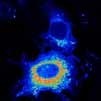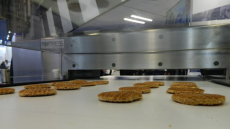Scientists fine tune "valuable tool" for inorganic arsenic detection

The research, to be published in the journal Food Chemistry next March, optimized an existing analytical method to gauge levels of inorganic arsenic (iAs), methylarsonic acid (MA) and dimethylarsinic acid (DMA) in order to achieve a lower, more sensitive limit of detection. The method optimized was the ion chromatography-inductively coupled plasma mass spectrometry (IC–ICPMS) which is used for arsenic speciation.
Valuable tool for assessment
The study also expanded the applicability of this method by looking at different cereal products including bread, biscuits, breakfast cereals, wheat flour, corn snacks, pasta and infant cereals.
The researchers also modified and optimized previously established parameters in order to improve the sensitivity of detection to lower levels. These adjustments included increasing the presence of carbon in the ion chromatography-inductively coupled plasma mass spectrometry (IC–ICPMS).
Findings using the optimized parameters showed that the total and inorganic arsenic content of 29 tested cereal-based food samples ranged between 3.7–35.6 and 3.1–26.0 microgram of arsenic per kg, respectively.
A lack of regulation
The researchers said that the current absence of set levels in European legislation is probably due to a lack of fully validated, standardized analytical methods and the unavailability of certified reference materials within the food arena.
Only a regulatory limit of 0.15 mg iAs kg in China is currently applied, while the European Food Safety Authority (EFSA) simply issued a general recommendation in 2009 to reduce daily dietary exposure to the naturally occurring toxic form.
Within this EFSA report cereal and cereal-based products were identified as contributing to daily iAs exposure in the general European population, with children below three years being the most exposed to iAs which was directly related to the intake of rice-based products.
In the past, scientists have urged authorities to set regulatory limits for iAs levels, particularly within the area of infant cereals since children are particularly vulnerable to the toxic effects of iAs.
The researchers said that although the iAs content of cereals is much lower than that of rice, cereals, and in particular wheat, should not be ignored as potential contributors to dietary iAs exposure in populations with a predominantly wheat-based diet.
What is arsenic, exactly?
Arsenic is a natural component of the earth’s crust and is widely distributed throughout the environment in the air, water and land. It is highly toxic in its inorganic form and is naturally present at high levels in the groundwater of many countries.
According to the World Health Organisation people are exposed to elevated levels of inorganic arsenic through drinking contaminated water, using contaminated water in food preparation and irrigation of food crops, industrial processes, eating contaminated food and smoking tobacco.
While cereals – along with other foods like fish, shellfish, meat, poultry, and dairy products - can also be dietary sources of arsenic, exposure from these foods is generally much lower compared to exposure through contaminated groundwater.
Source: Food Chemistry
Vol. 147, Iss. March 2014, pp. 377-385, doi: 10.1016/ j.foodchem.2013.09.138
“A need for determination of arsenic species at low levels in cereal-based food and infant cereals. Validation of a method by IC–ICPMS”
Authors: T. Llorente-Mirandes, J. Calderón, F. Centrich, R. Rubio, J.F. López-Sánchez














